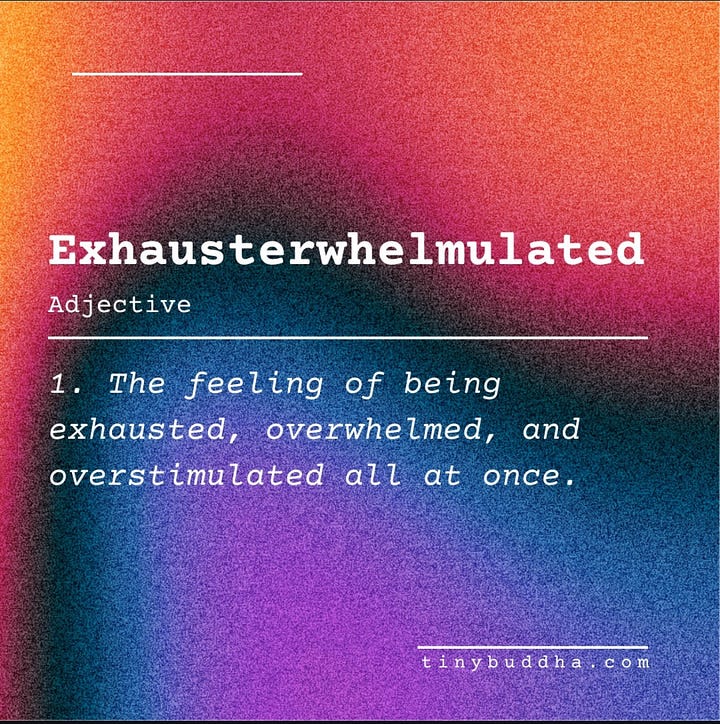Ever feel like life keeps tossing you around? One day you’re fine, the next you’re drowning in stress, overwhelm, or nonstop distractions. Imagine your life as crossing a massive, unexplored ocean. The waves are inevitable, so how do you keep from getting swept away?


You need anchors - small, steady rituals that hold you in place no matter how chaotic things get. I’m not talking about big life overhauls. I’m talking about simple things, like taking a walk without your phone or having a few minutes of quiet before diving into your day. It’s easy to dismiss simple practices, but these are what make or break your ability to turn any wave into something you can weather.
These anchors aren’t about escaping reality. They’re about helping you stay present and strong in the middle of it all. Let’s dive into how to build these practices so you can find balance, even when life feels like a storm.
What Are Anchors and Why Do They Matter?
Think of anchors as your stability points. They’re routines or actions you can return to when life feels shaky. They help you reset and reconnect to yourself instead of spiraling into anxiety, overthinking, or distractions.
When you don’t have anchors, you might notice patterns like:
Being chronically online because you're craving escape.
Snapping at people because you’re overstimulated.
Constantly feeling like you’re five steps behind.
Anchors won’t magically fix everything, but they’ll help keep you centered so you can handle the waves instead of getting lost in them.
What Throws You Off Course?
To build the right anchors, you need to know what pulls you out of balance.
Ask yourself:
What situations make me feel the most scattered or anxious?
When do I crave mindless distractions (like constantly checking my phone)?
What emotions or triggers make me feel like I need to escape?
The goal here isn’t to judge yourself but to spot patterns. Maybe you get overwhelmed by work deadlines or by reading the news. Once you know your triggers, you can create rituals to help bring you back to center.
Creating Anchors: Start Small, Build Slowly
You don’t need a long list of complicated habits to anchor yourself. Simple works best. Here’s how to get started:
1. Pick a Grounding Ritual
Choose a small, repeatable action that brings you into the present. Some ideas:
Take a short walk and notice what you hear, see, and feel.
Spend five minutes writing down what you’re grateful for.
Breathe deeply for 2 minutes before diving into work.
These might seem simple, but consistency is what gives them power.
2. Attach It to Something You Already Do
Tie your anchor to an existing habit. For example:
After you brush your teeth, take a few deep breaths or stretch.
When your coffee is brewing, write a gratitude note or journal.
This makes it easier to integrate without relying on tons of extra willpower.
The Power of Sensory Awareness
Sometimes the fastest way to ground yourself is to get out of your head and into your senses. When you’re feeling overwhelmed, try this exercise:
Pause and take a deep breath.
Identify:
One thing you can see.
One thing you can hear.
One thing you can feel.
One thing you can smell or taste.
By tuning in to your senses, you pull yourself into the present and give your mind a chance to slow down.
Cutting Out the Noise
Let’s be real, digital distractions are one of the biggest things pulling us away from presence. We scroll for comfort, but it just leaves us feeling more anxious and drained.
Instead of grabbing your phone first thing in the morning, try this:
Start your day with an anchor - maybe a walk, stretching, or enjoying a cup of coffee mindfully.
Schedule “no phone” times to give yourself space to reset (ex., 30 minutes before bed or after you wake up).
When the urge to scroll hits, pause and ask: What do I actually need right now - comfort, connection, or rest?
By creating boundaries, you reclaim time and mental clarity.
The 2-Week Anchor Challenge
If you’re ready to create more stability in your life, try this two-week challenge. It’s designed to help you test out different anchors and see which ones work best for you.
Sample Plan:
Day 1: Take a 10-minute walk outside, noticing your surroundings.
Day 2: Before checking your phone, complete a calming ritual (ex., deep breaths, journaling, stretching).
Day 3: Write down three things you’re grateful for at the end of the day.
Day 4: Pause for 10 deep breaths before tackling a stressful task.
Day 5: Spend time observing your senses anytime you start to feel overwhelmed - what can you see, hear, and feel right now?
Repeat, rotate, and expand these practices, noticing how they make you feel over time.
Why Anchors Work
These small actions might not seem like much, but over time, they create an extremely powerful foundation of resilience. Instead of feeling constantly reactive, you’ll find it easier to stay calm and centered - even on tough days.
When life’s inevitable waves hit, you won’t need to rely on distractions to cope. You’ll have routines and rituals to hold you steady, giving you space to think clearly and respond with intention.
Protect Your Peace
Life isn’t going to stop being chaotic, but that doesn’t mean you have to be pulled in every direction. Anchors give you a way to stay grounded through it all.
Start small. Stay consistent. And remember - you don’t have to fix everything today. Storms are part of life, and even though some are more brutal or last longer than others, eventually all waves settle. With the right tools and practices, you can steady your way through them.
Want to go deeper? Learn about ways to work with me.
Takeaways + Tools + Prompts
Identify Your Emotional “Warning Signs”
Anchors are most effective when you use them proactively, not just in moments of crisis. Learn to recognize the early signals that you’re becoming overwhelmed so you can ground yourself.
What are your physical and emotional cues for stress (ex., racing thoughts, irritability, shallow breathing)?
What small anchor could you use when you notice those cues?
Create an Evening Grounding Ritual
How you wind down at the end of the day sets the tone for your mental clarity and energy the next morning. Develop a soothing anchor that helps you release the stress of the day. Keep it phone-free to avoid overstimulation before you try to sleep.
5-10 minutes of gentle stretching or deep breathing.
Reflect on one thing you learned or appreciated that day.
Journal a ‘brain dump’ of thoughts to clear your mind before bed.
Design an Anchor for Transitions
Transitions (ex., moving from work to home life or from task to task) can be really jarring and leave you feeling scattered. Grounding yourself during these times helps you shift focus more intentionally.
Before switching tasks, take three deep breaths and visualize yourself releasing the previous activity.
Set a short mantra to anchor the shift (ex, "I'm fully present for what's next").
Stretch or move your body to reset your energy between work and personal time.
Anchor Yourself in Nature
Nature has a calming, grounding effect on the nervous system. Incorporating time outside can help you feel more centered and clear-headed.
Walk barefoot on grass, dirt, or sand.
Spend time watching the natural movement of trees, clouds, or water.
Start a nature journaling habit by documenting what you see, hear, and feel on outdoor walks.
Regularly Reassess Your Anchors
What works as an anchor today may not work tomorrow. Life circumstances, routines, and priorities shift, so it’s important to reassess your grounding practices periodically to make sure they still serve you.
Which of my current anchors feel effective and which feel forced or ineffective?
Are there new habits I’d like to experiment with?
How have my needs changed in the past month?
Meditative Prompt
Close your eyes and take a deep breath. Inhale slowly, feeling your chest rise, and exhale, releasing tension from your body.
Now, imagine you’re standing in the middle of a storm. The wind is howling, and waves are crashing around you. Despite the chaos, you feel steady. Beneath your feet is a strong, unshakable anchor, holding you firmly in place.
Ask yourself:
What are the anchors that keep me grounded in real life?
What actions or rituals bring me peace and stability, no matter the external noise?
How can I strengthen those practices this week?
Take another deep breath. With each inhale, feel your body becoming more rooted. With each exhale, let go of worry and distraction.
When you're ready, open your eyes, carrying this sense of calm and strength into your day. You have the power to stay anchored, no matter the storm.
Creative Project Prompt
This project will help you visualize the anchors that keep you grounded and identify areas where you need more stability.
Step 1: Grab something to write/draw on.
Step 2: Draw a large circle in the center and write "My Core Anchor" inside it. This could be your most reliable grounding habit (ex., a morning walk, journaling, or deep breathing).
Step 3: Around the core circle, draw smaller circles representing other areas of your life (ex., work, relationships, health, creativity).
Step 4: For each area, write down 1-2 existing or potential anchors that help you feel steady and centered. For example:
Work: Take a stretch break every two hours.
Relationships: Schedule a weekly or monthly tech-free dinner with loved ones.
Step 5: Reflect on your map. Ask yourself:
Which areas feel well-anchored?
Where do I need stronger support?
What small new rituals could I add to improve balance?
Gratitude Prompt
Consider writing these out by hand in your own words and saying them out loud:
I'm grateful for the moments of calm I can create within myself, even when everything around me feels overwhelming.
I'm grateful for the strength to stay grounded and centered, no matter how chaotic the world outside becomes.
I'm grateful for the small joys and steady rituals that remind me I can find peace, even in the middle of life's storms.




